What Is Endoscopic Sleeve Gastroplasty?
ESG helps with weight loss by reducing stomach size without surgery, cuts, or hospital stays. It’s a minimally invasive procedure with a quicker recovery compared to traditional weight loss surgeries.
Endoscopic Sleeve Gastroplasty (ESG) is a non-surgical procedure designed to support long-term weight loss by reducing stomach size without incisions or an overnight hospital stay. It offers an alternative to traditional bariatric surgery with a shorter recovery time.
At Rattinan Medical Center, ESG is performed using advanced techniques and strict medical standards to ensure a safe and effective approach to weight management.
Comparison of Endoscopic Sleeve Gastroplasty (ESG) and Sleeve Gastrectomy (SG)
Both Endoscopic Sleeve Gastroplasty (ESG) and Sleeve Gastrectomy (SG) are weight loss procedures designed to reduce stomach size, but they differ significantly in approach, invasiveness, and recovery.
| Endoscopic Sleeve Gastroplasty (ESG) | Sleeve Gastrectomy (SG) |
|---|---|
| Non-surgical, endoscopic | Surgical, laparoscopic |
| No external incisions (done through the mouth) | Requires abdominal incisions |
| Stomach is sutured to reduce size, no removal | Part of the stomach is permanently removed |
| Outpatient, go home the same day | Requires hospital stay (1–3 days) |
| Faster recovery, return to activities within days | Longer recovery, typically weeks |
| Minimal pain & discomfort | More discomfort due to surgery |
| Can be reversed in some cases | Permanent, irreversible |
| Lower risk (no major surgery) | Higher risk (leaks, infections, hernias) |
| Gradual, effective for moderate weight loss | More rapid and significant weight loss |
Similarities (Both ESG & SG)
- Purpose: Both procedures aim to reduce stomach size to support weight loss.
- Effectiveness: Both help patients feel full faster and eat less, leading to long-term weight loss.
- Medical Supervision: Both require professional evaluation, follow-up care, and lifestyle changes for success.
- Candidates: Suitable for individuals struggling with obesity and looking for a medical weight loss solution.
Which Procedure is Right for You?
- ESG is a good option for those seeking a non-surgical, lower-risk weight loss procedure with a quicker recovery.
- SG is suited for individuals needing more substantial weight loss and are prepared for a permanent change.
Both options are effective, and the best choice depends on individual health needs and weight loss goals.
Who Is a Good Candidate for Endoscopic Sleeve Gastroplasty?
- People with a BMI of 30-40 who need help losing weight but don’t qualify for traditional bariatric surgery.
- Those who prefer a less invasive option with a shorter recovery time.
- Individuals committed to making long-term lifestyle changes for sustainable weight loss.
Weight Loss Expectations with Endoscopic Sleeve Gastroplasty (ESG)
- Average Weight Loss: ESG typically leads to 15-20% total body weight loss within the first year.
- Gradual Results: Weight loss occurs progressively over 6 to 12 months, depending on lifestyle changes.
- Sustainable Outcome: Long-term success depends on dietary habits, exercise, and medical follow-ups.
- Less Drastic Than Surgery: While ESG is effective, weight loss is generally less than Sleeve Gastrectomy (SG) since no stomach tissue is removed.
- Potential for Regain: Without lifestyle adjustments, some weight regain may occur over time.
Who Benefits the Most?
- Ideal for those with a BMI of 30-40 looking for a non-surgical weight loss option.
- Suitable for patients committed to long-term lifestyle changes to maintain results.
Understanding How Endoscopic Sleeve Gastroplasty Works
Endoscopic Sleeve Gastroplasty is a special procedure that uses a small camera (called an endoscope) and tiny tools to place stitches inside your stomach. Here’s how it works:
1.Endoscopic Suturing Technique
The doctor uses the endoscope, a flexible tube with a camera, to see inside your stomach without needing to make big cuts. They then use small instruments to place stitches inside.
2.STOMACH REDUCTION
These stitches are used to make the stomach smaller by folding parts of it inwards. This reduces the amount of food your stomach can hold at one time, helping you feel full with less food.
3.APPETITE CONTROL AND PORTION REDUCTION
By making the stomach smaller, Endoscopic Sleeve Gastroplasty helps control how much you can eat at once. This can lead to feeling satisfied with smaller portions, making it easier to stick to healthier eating habits.
Endoscopic Sleeve Gastroplasty Procedure: A Step-by-Step Walkthrough
The Endoscopic Sleeve Gastroplasty is a non-surgical, endoscopic weight loss treatment designed to reduce stomach size without incisions. Here’s how it works:
1. Pre-Procedure Preparation
- A doctor evaluates your medical history and weight loss goals.
- You may need to follow a liquid diet a few days before the procedure.
- Fasting is required 8-12 hours before the procedure.
2. Anesthesia Administration
- The procedure is performed under general anesthesia or sedation, ensuring no pain or discomfort.
3. Endoscopic Insertion
- A flexible endoscope with a suturing device is inserted through the mouth into the stomach.
- No external incisions are needed.
4. Stomach Suturing
- The OverStitch device is used to place sutures inside the stomach to reduce its size.
- The new, smaller stomach limits food intake, helping with weight loss.
5. Completion & Recovery
- The procedure takes about 60–90 minutes.
- Patients are monitored for a few hours before being discharged the same day.
- Most can return to daily activities within a few days.
6. Post-Procedure Care
- A liquid diet is required for the first few weeks.
- Gradual reintroduction of soft and solid foods follows under medical supervision.
- Regular follow-ups help track progress and maintain long-term weight loss.
Is Endoscopic Sleeve Gastroplasty Suitable For You?
Here are a few questions to consider. If you answered yes to any of them, you may be a suitable candidate for Endoscopic Sleeve Gastroplasty— a less invasive and effective weight-loss solution.
- Are you overweight but not enough to require gastric bypass surgery (BMI 28-35)? (Click! to calculate BMI)
- Are you considered super obese and at high risk for long-term surgery?
- Have you had multiple abdominal surgeries in the past, making additional surgeries more difficult?
- Do you have abnormal abdominal organs that complicate traditional surgical procedures?
- Are you over the age limit for normal surgery, such as being over 65 years old?
- Do you prefer a non-surgical option due to religious beliefs or personal reasons?
- Are you looking for a temporary solution while waiting for gastric bypass or sleeve surgery?
- Are you afraid of undergoing any type of gastric bypass surgery?
What Are the Risks?
What Are the Risks of Endoscopic Sleeve Gastroplasty (ESG)?
Let’s be completely honest about ESG risks so you can make an informed decision. While ESG is significantly safer than traditional bariatric surgery—no cutting, lower complications, faster recovery—it does have important limitations you need to understand.
Long-Term Effectiveness Risks (Most Critical)
Stomach Re-Expansion & Weight Regain: This is the primary concern. Your stomach may gradually stretch back to a larger size if you don’t strictly maintain new eating habits and lifestyle changes. ESG is a tool, not a permanent fix—it requires YOUR lifelong commitment.
Moderate Weight Loss: Expect 20-30% body weight loss within 12 months—meaningful but less than surgical options like gastric sleeve or bypass. If you need more aggressive intervention, ESG may not be sufficient.
Persistent Hunger: Unlike traditional sleeve surgery that removes the hunger hormone-producing stomach portion, ESG leaves it intact. You’ll still feel hungry normally, though you’ll get full quickly. Managing hunger requires real discipline.
Suture Loosening: Internal stitches may naturally loosen or come undone over time. While generally not harmful, this can contribute to stomach re-expansion and reduced effectiveness.
Demands Strict Discipline: Success absolutely depends on maintaining dietary changes, exercise, and healthy habits—this won’t work without your committed effort.
Immediate Side Effects (Usually Temporary)
Nausea & Vomiting: Most common early side effect as your body adjusts to smaller stomach capacity, especially first few weeks. Managed with liquid-only diet initially and anti-nausea medication.
Discomfort & Fullness: You may feel bloated or uncomfortable eating as you learn your new capacity.
Infection/Inflammation: Low risk compared to surgery, but rare internal complications remain possible.
Procedural & Practical Considerations
Operator Skill Critical: Risk of accidentally stitching organs outside the stomach if physician lacks sufficient experience. Choose an experienced, specialized surgeon.
Higher Cost: Expensive due to specialized imported OverStitch™ equipment and expertise required.
Not for Severe Obesity: If BMI over 40, ESG may not provide sufficient intervention—you might need more aggressive surgical options.
What’s Reassuring
ESG is low-risk with fewer complications than conventional surgeries because there’s no stomach cutting. You avoid major surgical risks, experience faster recovery, have no permanent anatomical changes, and face fewer long-term issues like nutritional deficiencies or severe acid reflux.
The Critical Truth
ESG’s success depends heavily on YOU. It’s not magic—it’s a powerful tool that reduces stomach capacity and helps you feel full faster, but maintaining results requires lifelong commitment to healthy eating, portion control, exercise, and lifestyle modification.
Bottom Line
ESG offers safer, less invasive weight loss with manageable, generally minor risks. But enter with realistic expectations: it produces less weight loss than surgery, doesn’t eliminate hunger, demands strict ongoing discipline, and carries re-expansion risk without lifestyle maintenance.
If you’re prepared to be an active, committed partner in your journey and understand this is a tool requiring ongoing effort—not a permanent fix—ESG can be an excellent, safer option. Your dedication determines your success, and we’re here to support you every step.
What Are the Results?
What Are the Results of Endoscopic Sleeve Gastroplasty (ESG)?
ESG delivers meaningful, life-changing results across weight loss, health improvements, and quality of life—with significantly faster recovery than traditional surgery. Here’s exactly what you can expect:
Weight Loss Results
Stomach Reduction: Using specialized OverStitch™ sutures inserted through your mouth via endoscope, your stomach is folded and sewn from inside, reducing its size substantially. This means you’ll eat less and feel full much faster.
Reduced Hunger: After the procedure, you’ll experience decreased hunger and feel satisfied longer compared to non-surgical methods like diet pills or gastric balloons. Important note: unlike traditional sleeve surgery, ESG doesn’t remove the hunger hormone-producing stomach portion, so you’ll still feel normal hunger cues—but you’ll get full quickly with small portions.
Expected Weight Loss: You can lose approximately 20-30% of your initial body weight within 12 months. For example, if you weigh 100kg, expect to lose 20-30kg. While this is less than traditional bariatric surgery (sleeve/bypass), it’s significant and meaningful—especially with the added safety benefits.
Dramatic Health Improvements
The weight loss from ESG leads to permanent health improvements and reduced risk of obesity-related diseases:
Metabolic improvements: Decreased risk of diabetes, high blood pressure, high cholesterol, and fatty liver disease
Cardiovascular benefits: Reduced heart strain, lower risk of stroke, improved coronary artery health
Other conditions: Improvement in sleep apnea and weight-related arthritis
These aren’t minor changes—they’re life-extending, quality-of-life transforming improvements that reduce your risk of serious, chronic diseases.
Procedural Advantages (Why ESG is Remarkable)
No external scars: Performed entirely through your mouth via endoscope—no abdominal incisions whatsoever
Rapid recovery with minimal pain: Most patients go home the same day or within 24 hours. Pain scores typically rate 0-3 out of 10—dramatically lower than traditional surgery
Low complication risk: Significantly fewer risks and complications than conventional bariatric surgeries, with fewer long-term issues like nutrient deficiencies or severe acid reflux
No vitamin supplements required: Because ESG only reduces stomach size without altering intestinal pathways or removing tissue, nutrient absorption remains normal—no lifelong vitamin regimen needed
Critical Understanding: Your Role in Results
Here’s what you absolutely must know: ESG’s long-term success depends on YOUR commitment to lifestyle changes. The procedure is a powerful tool that mechanically restricts your stomach capacity, but:
- If you don’t maintain strict dietary discipline, your stomach may gradually stretch back to original size
- Maintaining weight loss requires ongoing commitment to healthy eating and regular exercise
- The procedure creates the opportunity; your dedication creates lasting results
Bottom Line
ESG delivers meaningful weight loss (20-30% body weight), dramatic health improvements, rapid recovery, no scars, minimal pain, and low complication risk—all without the invasiveness and long-term complications of traditional surgery. It’s an excellent middle-ground option for patients who need more intervention than diet alone but want to avoid major surgery.
However, this isn’t a “magic fix”—it’s a tool that works with your commitment to lifestyle change. Patients who embrace dietary modifications and exercise see excellent, sustained results. Those who don’t may experience stomach re-expansion and weight regain.
If you’re ready to partner actively in your transformation and understand that ESG empowers you to succeed but doesn’t do the work for you, the results can be truly life-changing—safer recovery, meaningful weight loss, and dramatically improved health for years to come.
Expert Bariatric Surgeon in Thailand
Bariatric Surgery at Rattinan Medical Center will be performed by Dr. Panat Yimcharoen, a skilled surgeon trained in the use of the OverStitch device for scarless gastric reduction since 2017.
He studied directly under top surgeons Professor Gontrand Lopez Nava and Professor Manoel Galvao, who are among the leading experts in OverStitch gastric bypass.
Additionally, Dr. Yimcharoen trained at the Cleveland Clinic, ranked second on Newsweek’s Best Hospitals 2022 list, where he gained expertise in gastric bypass surgery.
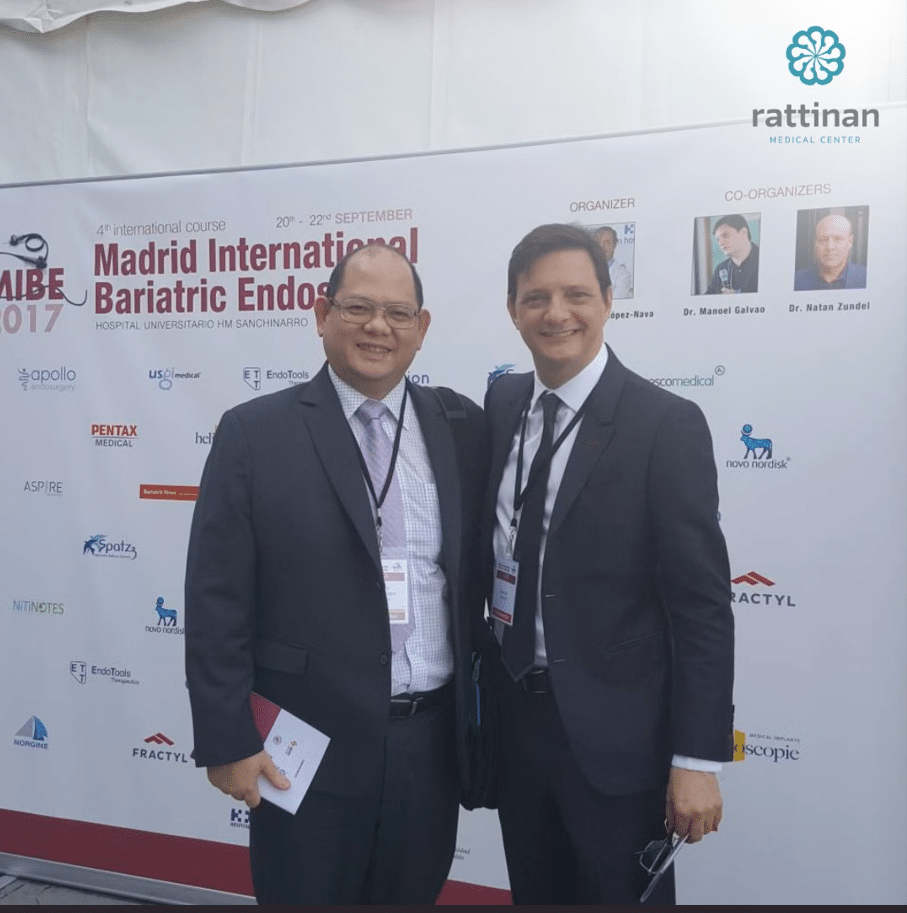

Professor Manoel Galvao (left) Professor Gontrand Lopez Nava (right)

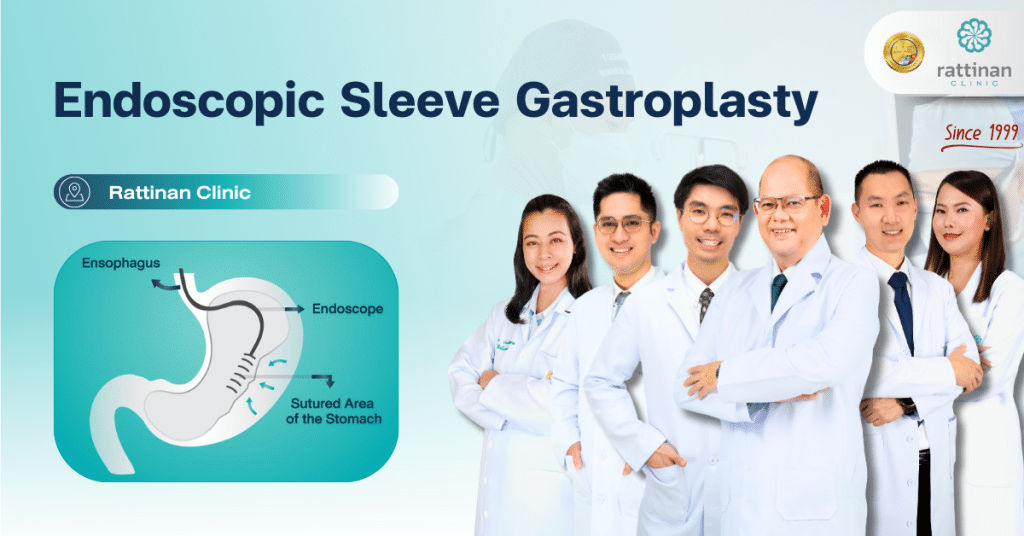

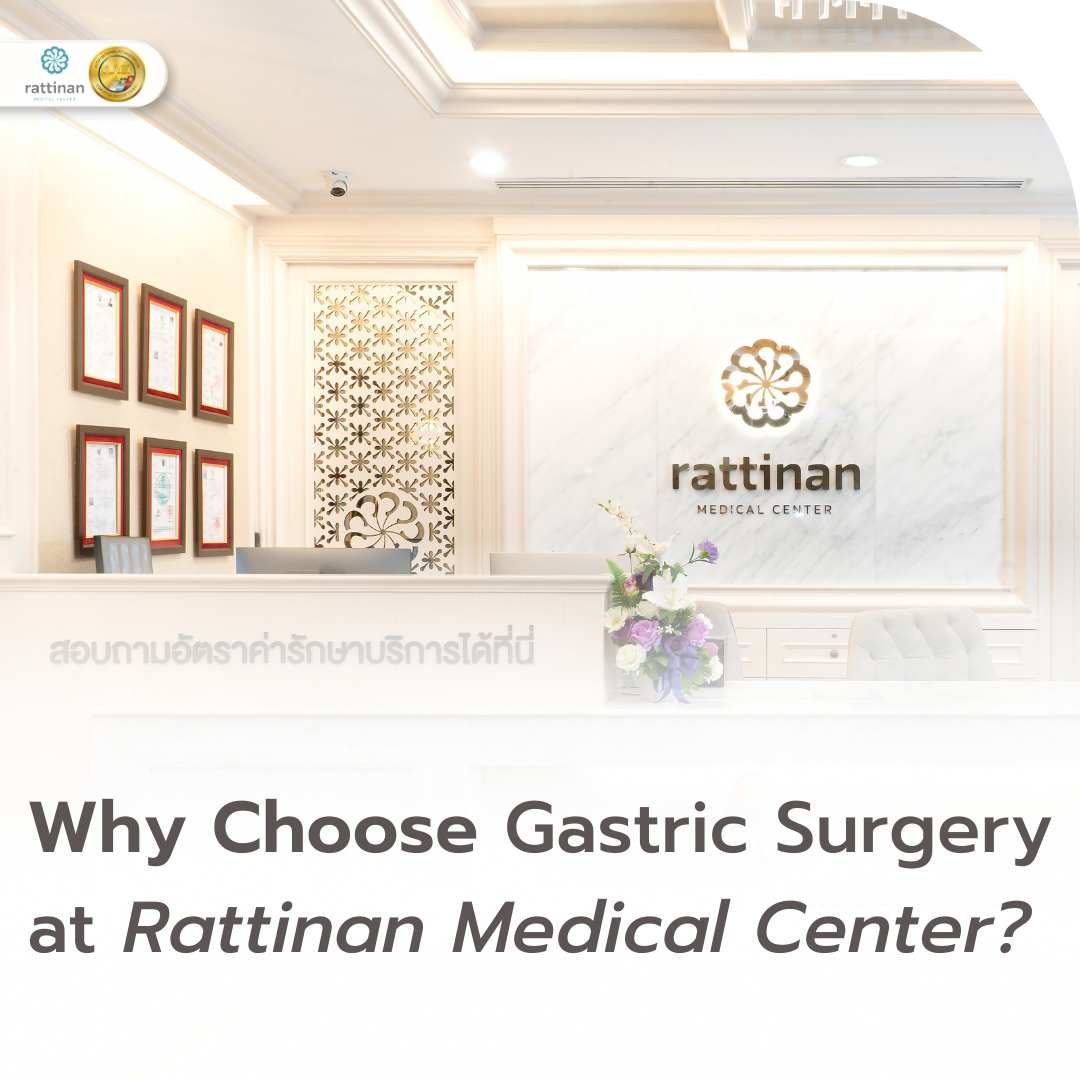
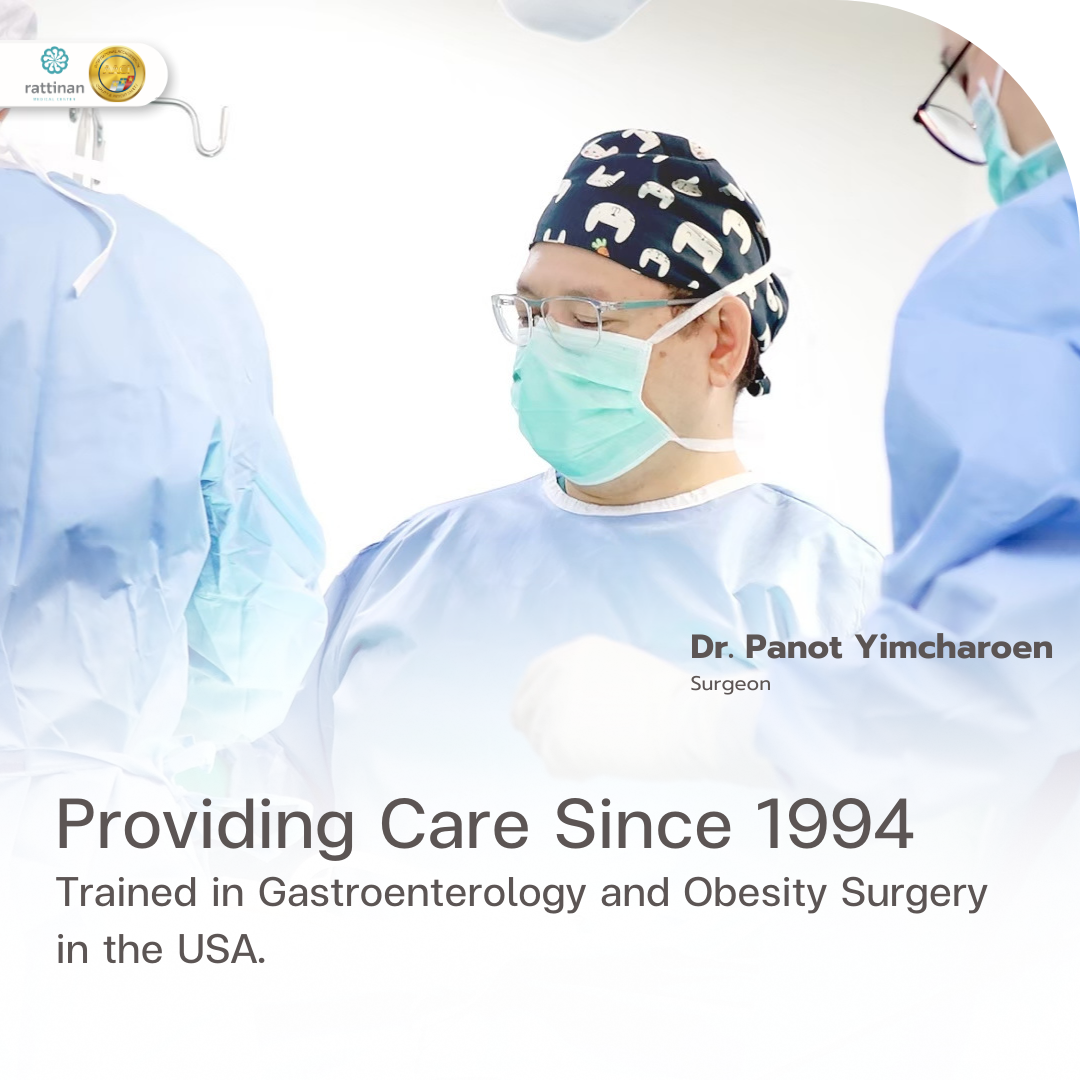
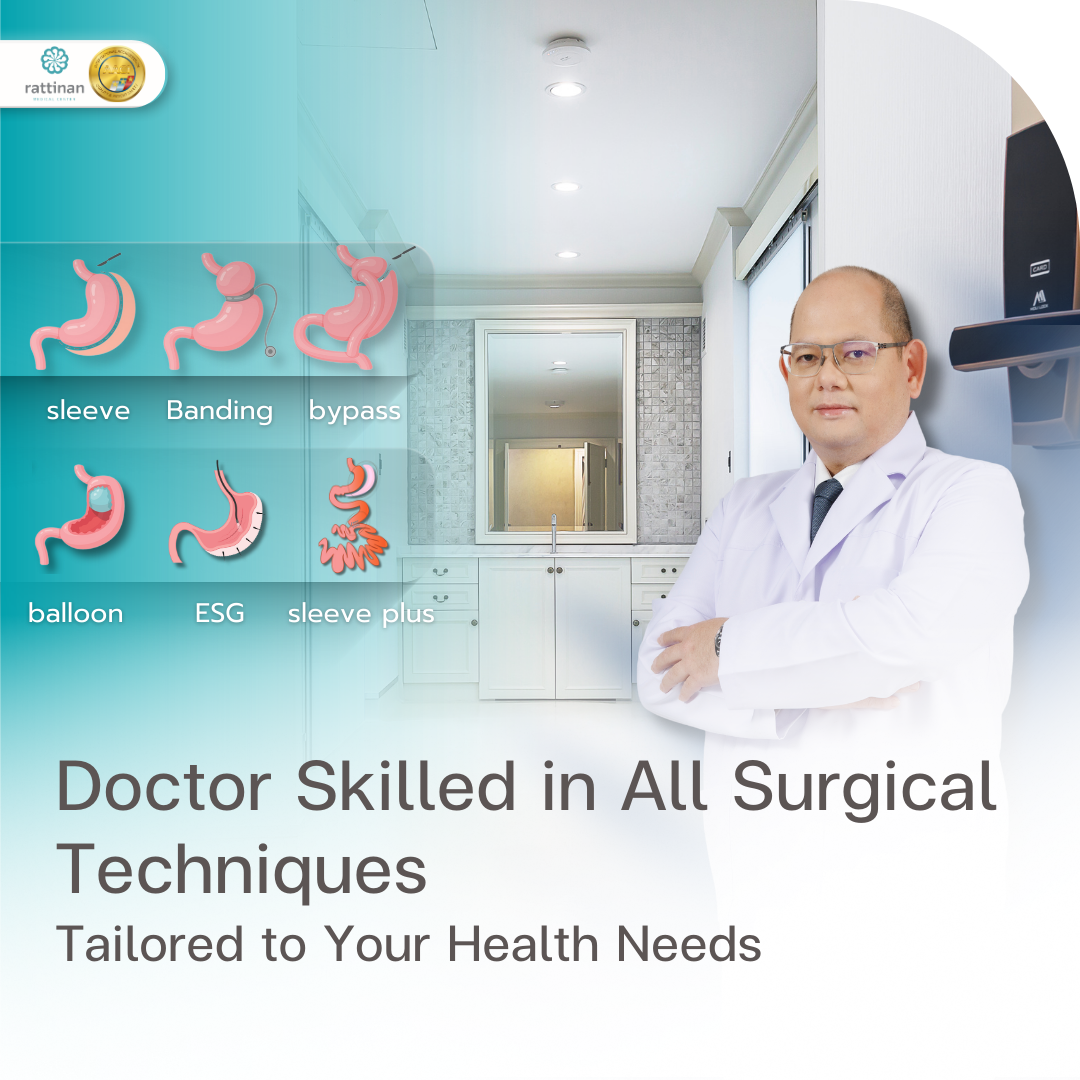
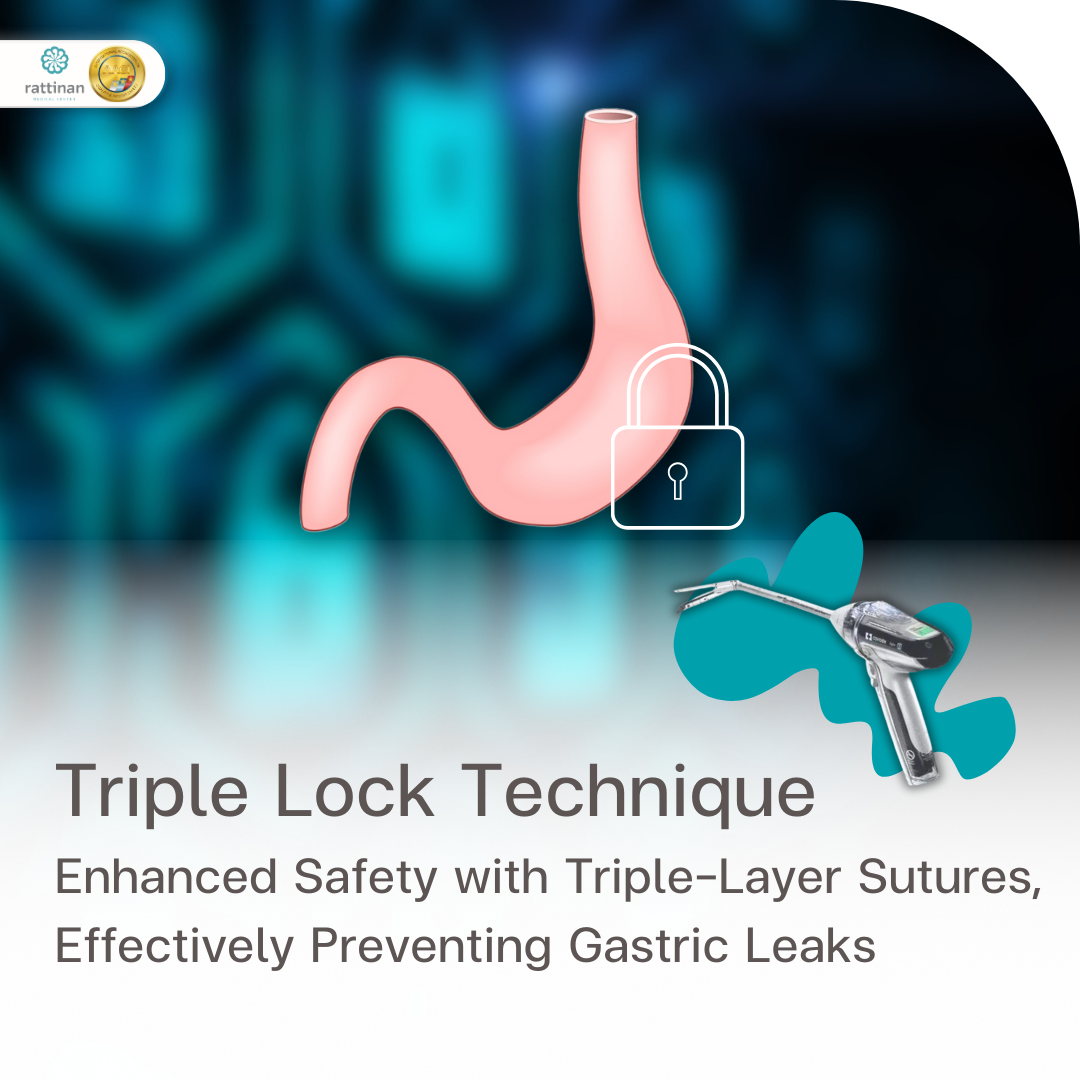
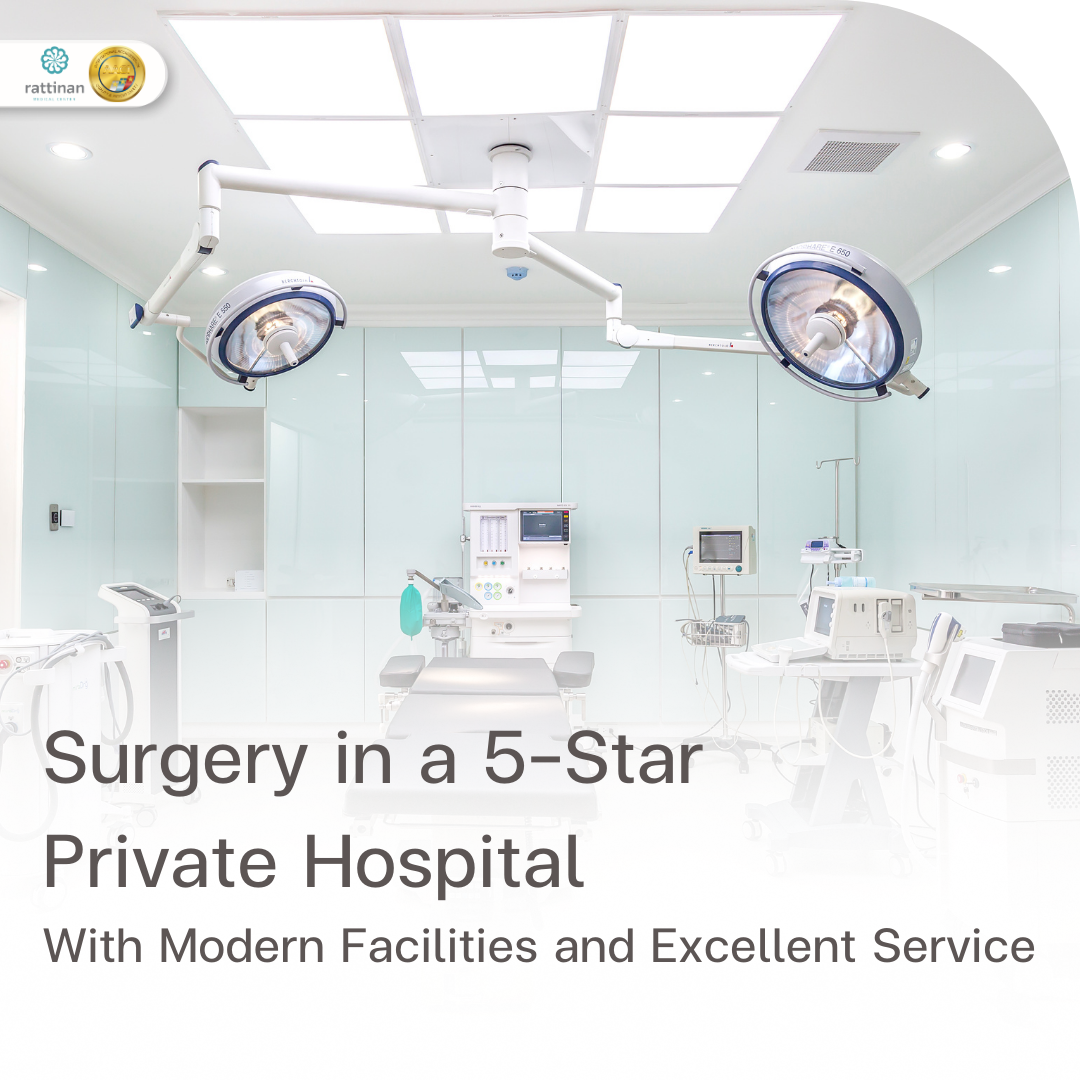
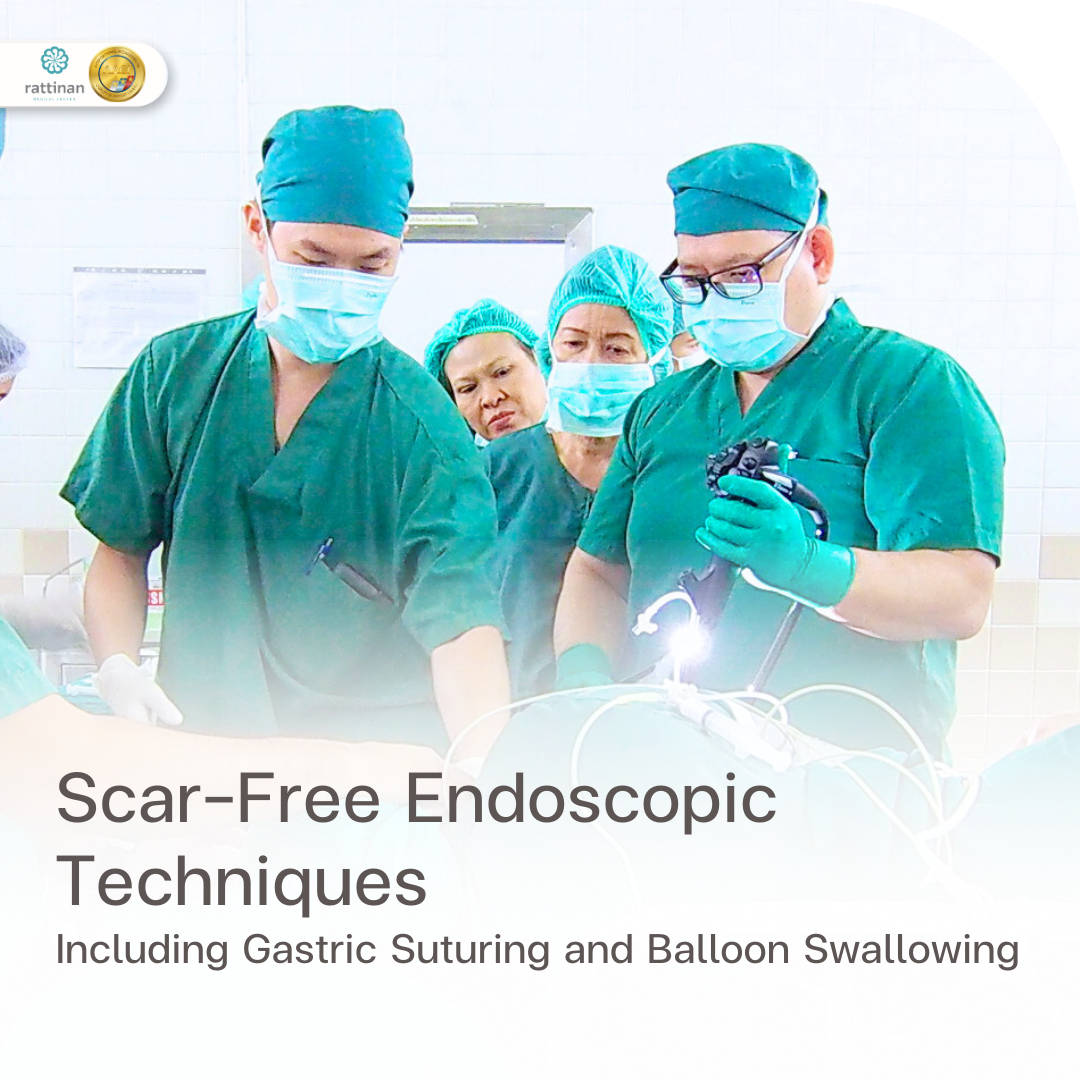
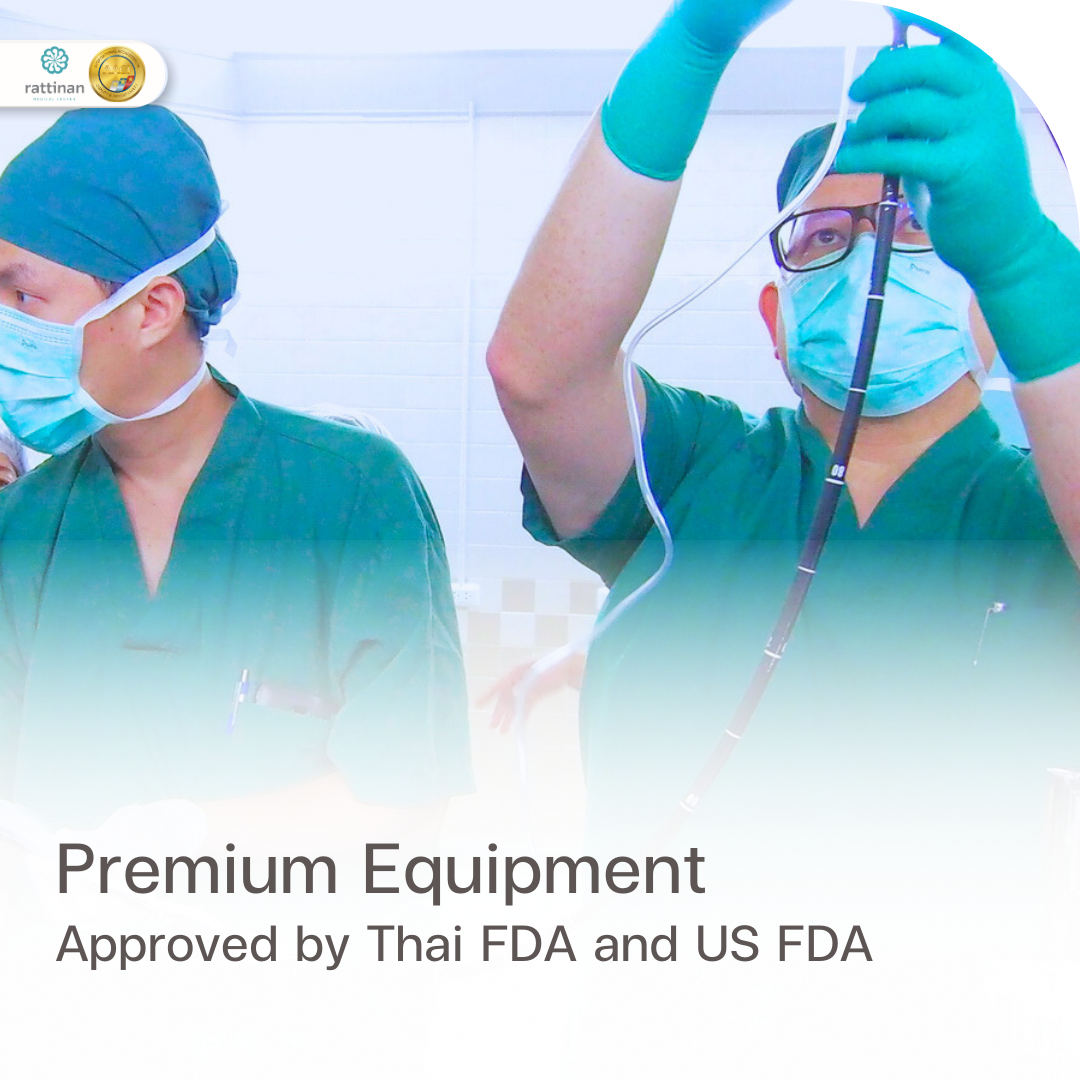
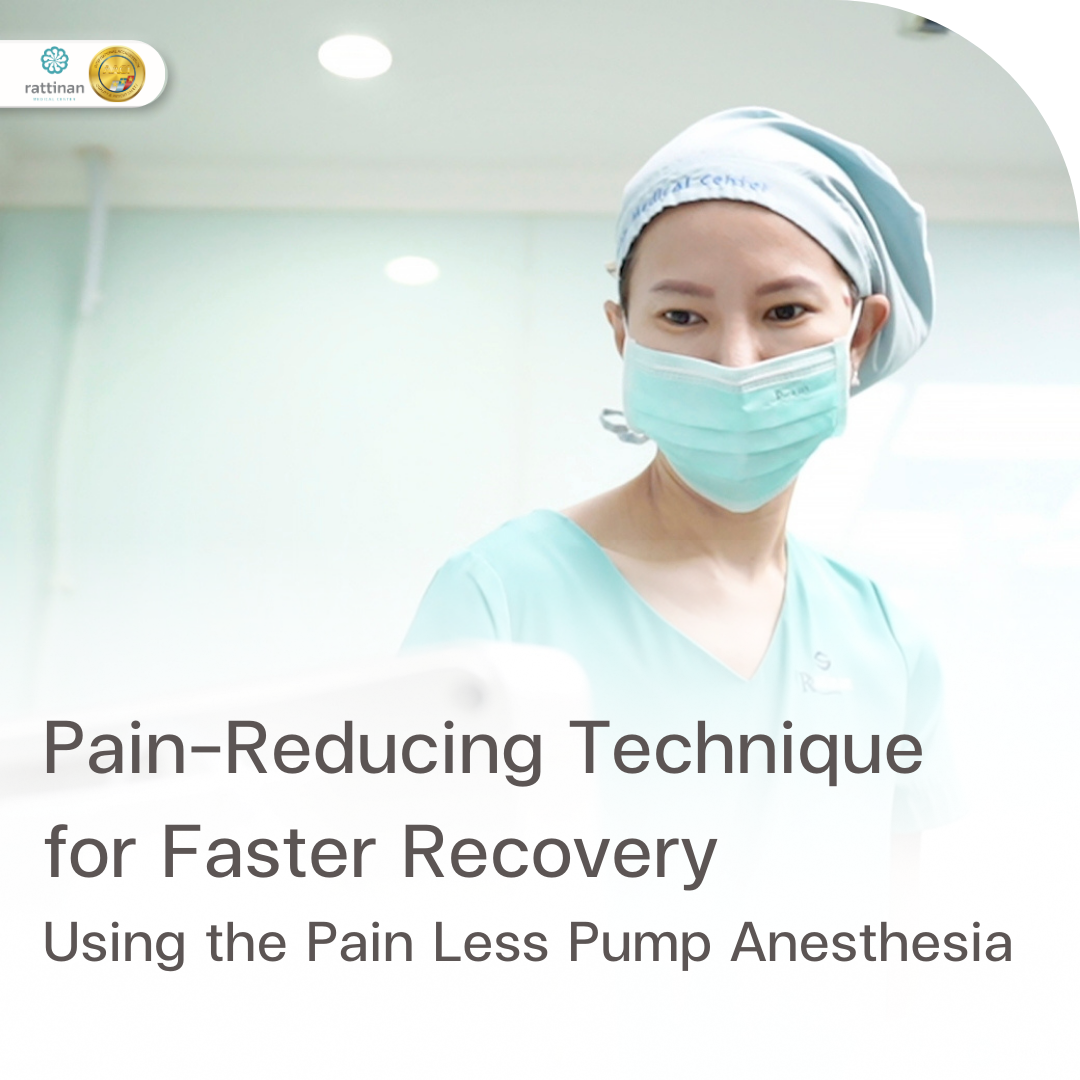

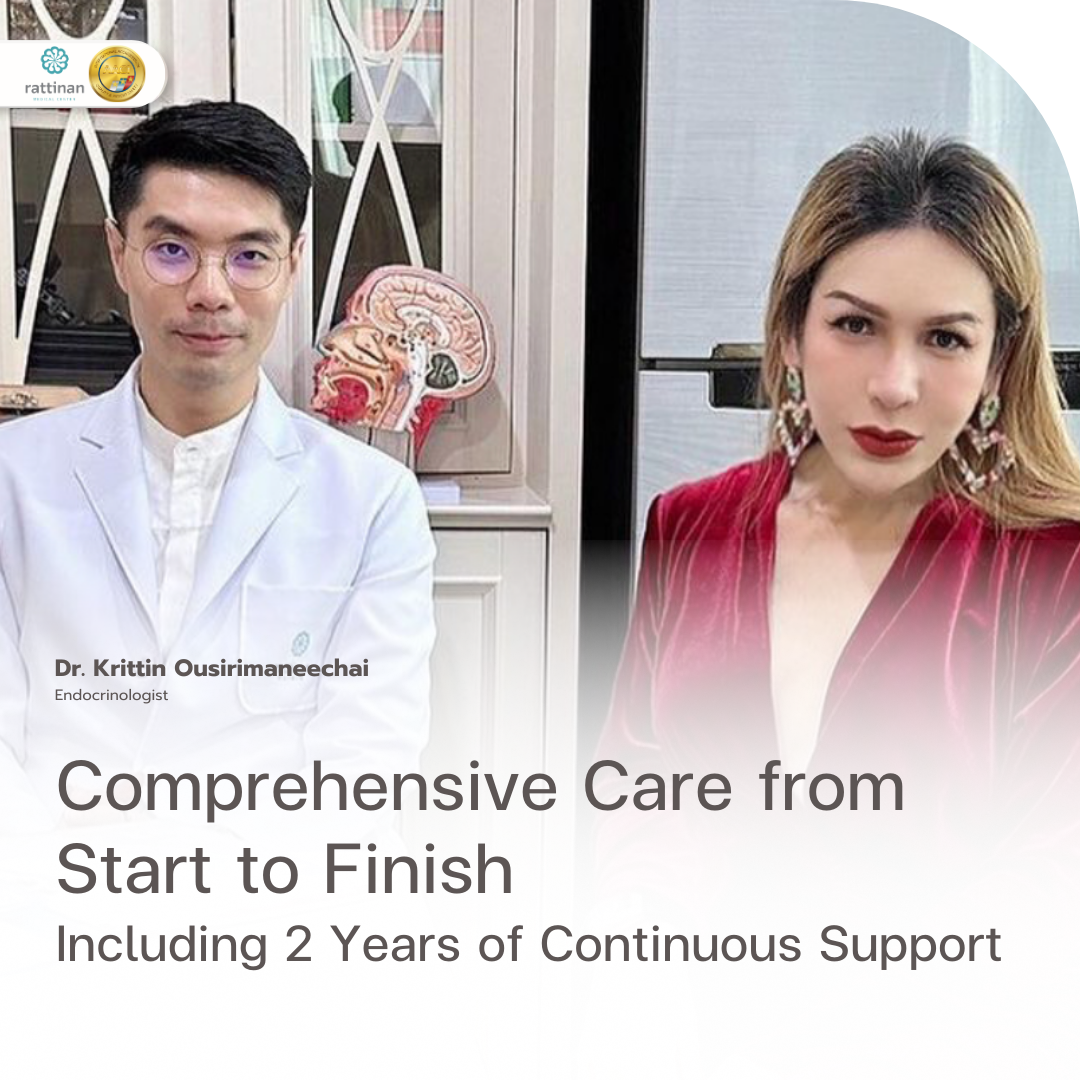
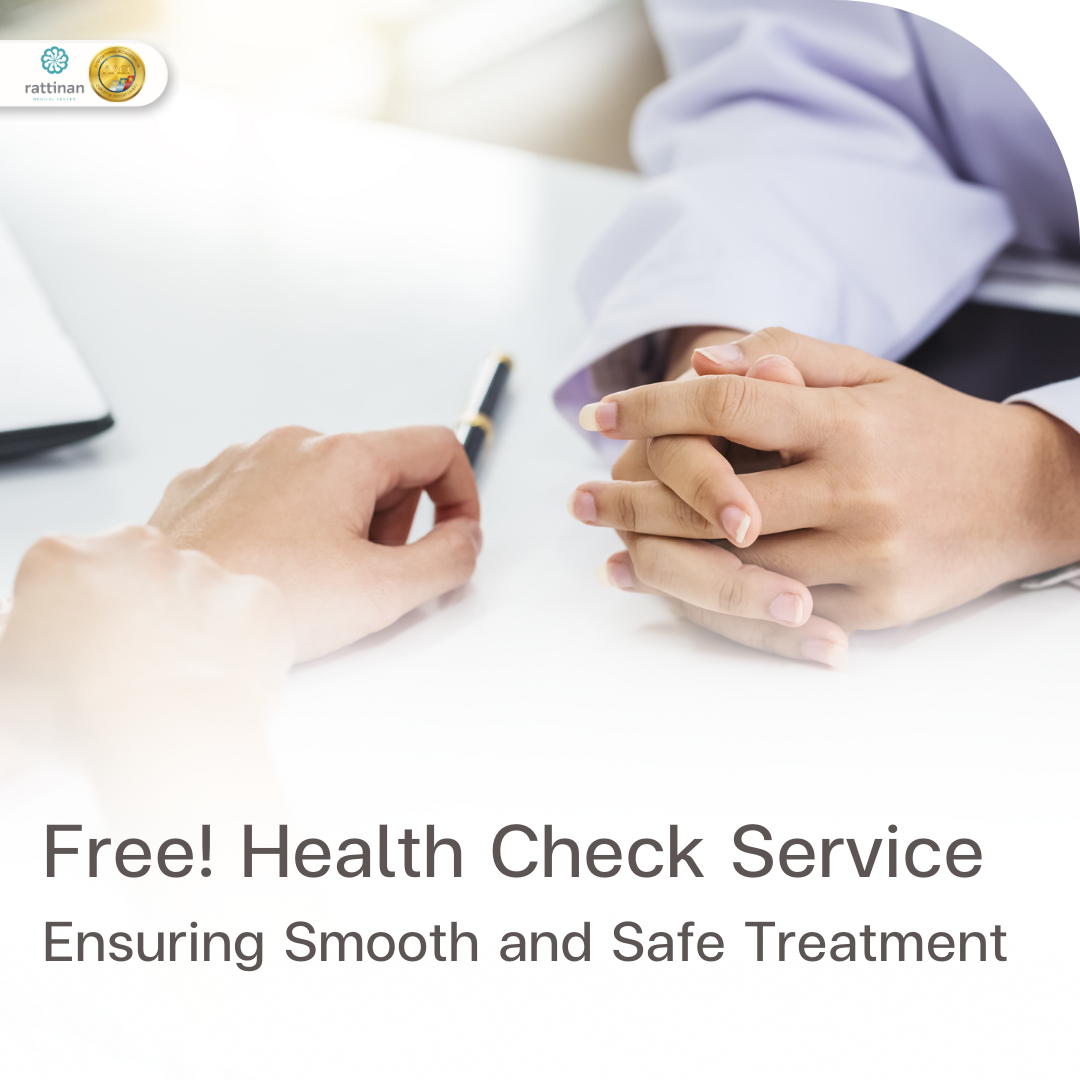
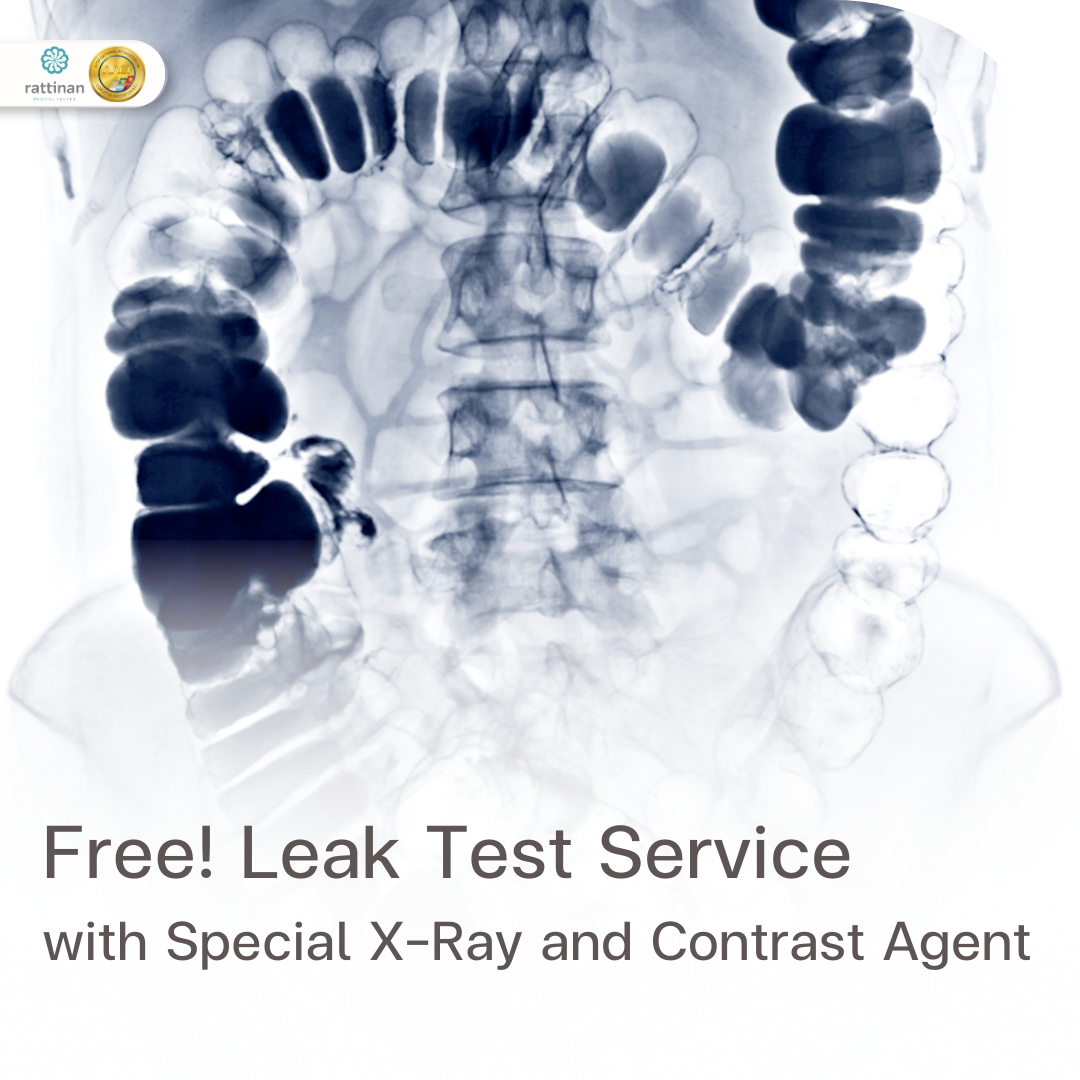
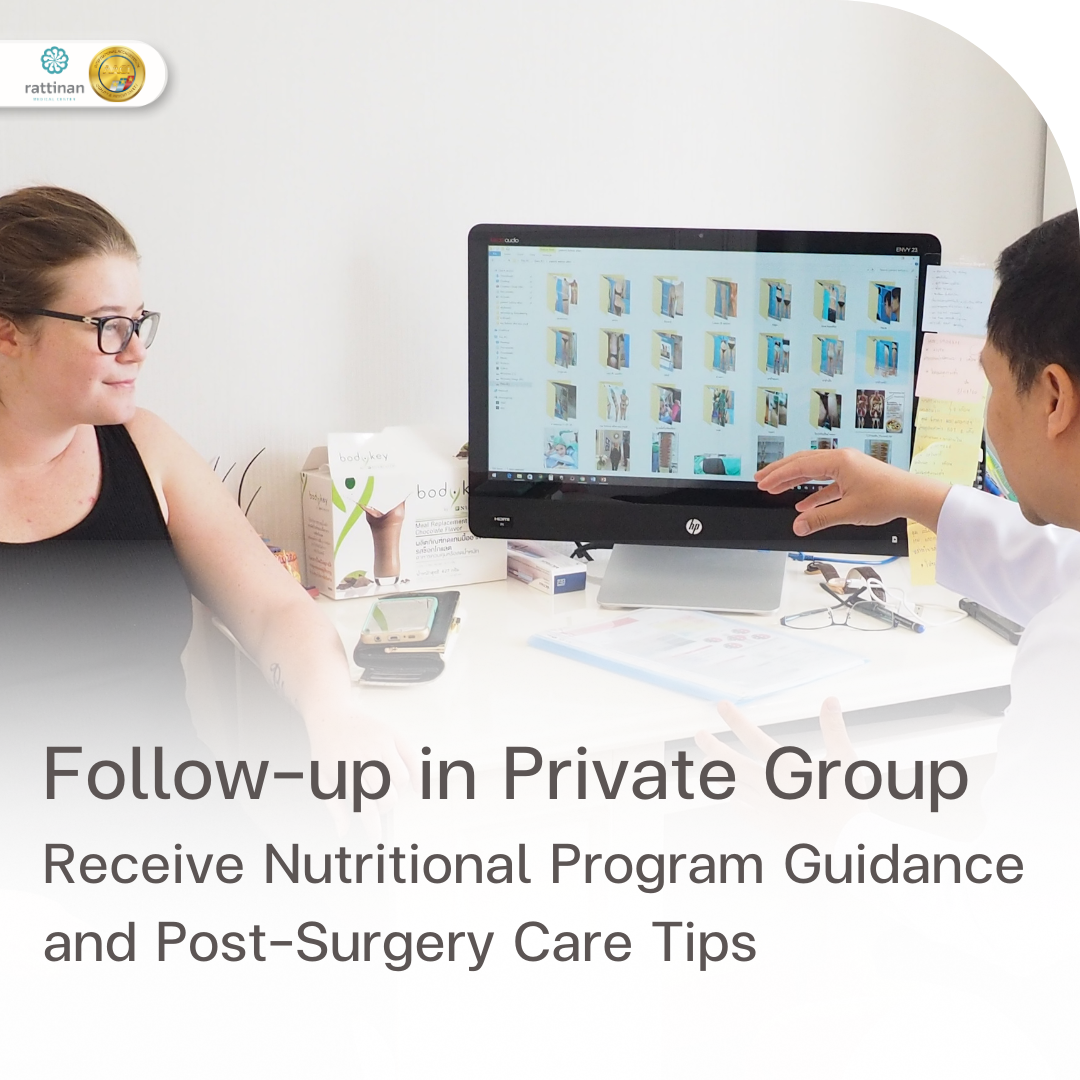
Dr. Suthipong Treeratana (Dr. Nueng) specializes in liposuction and body contouring surgery, focusing on personalized treatment plans to help you feel more confident in yourself.